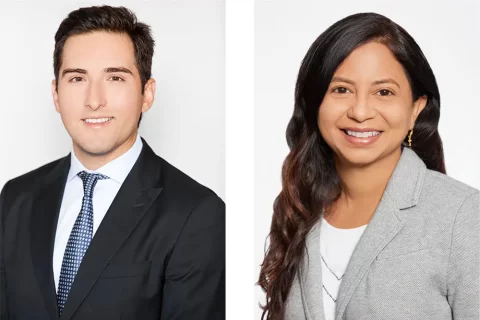In recent years, deep fake and AI technology have gained widespread attention and raised concerns about the potential for manipulated media to cause harm. The technology is capable of creating convincing fake images and videos, making it difficult to differentiate between real and fake content.
One area where this technology poses a particular risk is employee headshots, which are used widely by businesses for various purposes, including recruitment, marketing, and branding. In this blog, we will explore the dangers of deep fake and AI technology and what that means for employee headshots.
The Dangers of Deep Fake and AI Technology

Deep fake and AI technology pose several dangers and risks to businesses and individuals. The advancement of this technology has enabled the creation of fake images and videos that can be easily spread and manipulated, leading to various negative consequences for society. One of the significant risks is the ability to spread misinformation and damage the reputation of businesses or individuals.
Misleading content
Deep fake technology has been used to create and circulate fake news across social media platforms, causing confusion and panic among people. By manipulating images, audio, and videos, creators with malintent can present false information as genuine, leading to the widespread dissemination of misleading content. This poses a significant challenge for businesses as they strive to maintain transparency and credibility.
Moreover, deep fake technology has been employed to create fabricated videos featuring prominent individuals, such as politicians or business leaders, saying or doing things they never actually did. These manipulated videos can be incredibly convincing, making it challenging to discern between what is real and what is fake. Such instances not only damage the reputation and credibility of the targeted individuals but also undermine the trust of the public and stakeholders.
Deep fake technology and employee headshots
Content created through deep fake technology can also impact employee headshots. If fake images of employees are created and shared online, they can misrepresent the business and its employees, leading to confusion and mistrust among customers and stakeholders. This can ultimately harm the business’s reputation and bottom line.
The implications of deep fake technology extend to employee headshots as well. With the ability to generate highly realistic images of non-existent individuals, it becomes possible to create employee headshots that resemble actual employees, even if those individuals were not involved in the process. This presents a substantial risk for businesses that heavily rely on employee headshots for various purposes, including employee identification, marketing, and branding.
For example, imagine a scenario where a deep fake image of an employee is created and used on a company’s website or promotional materials. The fabricated headshot could potentially mislead clients or customers, leading to a breakdown of trust and credibility.
Additionally, if these manipulated headshots are used for employee identification, it could compromise security measures and create confusion within the organization.
Furthermore, if deep fake technology is used to create erroneous content featuring employees, it can have serious consequences for their professional and personal lives. Employees may be wrongly associated with false information or inappropriate behavior, damaging their reputation and potentially leading to job loss or other negative outcomes.
To mitigate the risks of deep fake technology, businesses should take proactive measures to verify the authenticity of employee headshots and other visual content used for marketing and branding purposes. This can include partnering with professional photographers specializing in authentic and high-quality imagery, and implementing internal policies and procedures to ensure the integrity of visual content used by the business.
The implications of deepfake are far-reaching, as the authenticity of employee headshots plays a crucial role in establishing a professional and trustworthy image for businesses. Authentic headshots enable clients and customers to connect with employees on a personal level, fostering a sense of trust and reliability. However, with the rise of deep fake and AI technology, businesses face the challenge of preserving the authenticity and integrity of their employee headshots.
The Importance of Authentic Employee Headshots

Employee headshots play a crucial role in the operations of many businesses. These images serve multiple purposes, including employee identification, marketing, and branding. They contribute to creating a professional and trustworthy image for the company. When customers and clients see the faces of employees, it fosters a sense of connection and reliability, ultimately building trust.
Authenticity at risk due to deepfake technology
However, the authenticity of employee headshots is at risk due to the emergence of deep fake and AI technology. These advanced technologies have the potential to undermine the genuine nature of these images. With the ability to create fake and manipulated images, businesses face the danger of losing the trust they have worked hard to establish. If customers discover that the employee headshots are fraudulent or manipulated, it can significantly impact their perception of the company’s credibility.
Furthermore, the implications of deep fake and AI technology extend beyond the business-client relationship. Employees themselves may feel violated and their privacy compromised if their images are misused or manipulated without their consent. This not only raises ethical concerns but also creates a sense of vulnerability among the workforce.
Therefore, businesses must recognize the importance of maintaining the authenticity of employee headshots in the face of these technological risks. By ensuring that the headshots accurately represent the employees, businesses can maintain the trust of their customers and foster stronger relationships. Additionally, respecting the privacy and consent of employees when using their images is essential to uphold ethical standards and maintain a positive work environment.
The Risks to Businesses
The risks that deep fake and intelligence technology pose to businesses cannot be understated. These risks encompass potential damage to brand reputation, legal liabilities, and employee privacy concerns. Understanding these risks is crucial for businesses to mitigate the negative impacts they can have on their operations.
One significant risk businesses face is the potential damage to their brand reputation. If a business utilizes employee headshots to promote its products or services and it is later discovered that these images are fake or manipulated, the consequences can be severe.
Customers may feel deceived and lose trust in the person or business, leading to a decline in sales and a damaged reputation. Building and maintaining a positive brand image requires authenticity, and the use of fake employee headshots directly undermines that trust.
Legal liabilities
Moreover, the use of fake images in marketing materials can expose businesses to legal liability. If a business incorporates a manipulated or fake employee headshot in an advertisement and this deception is exposed, it may be held liable for false advertising. This can result in legal repercussions, financial penalties, and further damage to the business’s reputation.
Ensuring the authenticity of employee headshots is not just a matter of ethical responsibility but also a legal requirement to avoid potential legal consequences.
In addition to the risks associated with brand reputation and legal liabilities, businesses must also consider employee privacy concerns. Using employee headshots without their consent or manipulating their images can violate privacy laws and regulations. Employees have a right to control the use of their personal information, including their images. Failing to obtain proper consent or misusing their images can not only result in legal repercussions but also create a breach of trust between the business and its employees. Respecting employee privacy is essential for fostering a positive work environment and maintaining healthy relationships with the workforce.
To safeguard against these risks, businesses should implement measures to verify the authenticity of employee headshots. This can include utilizing professional photographers to capture genuine images, obtaining explicit consent from employees for image usage, and implementing robust security measures to protect employee data and images.
How to Ensure Authentic Employee Headshots
To ensure that employee headshots are authentic, businesses should follow best practices for taking and using images of their employees. The following are some of the best practices that businesses should consider:
Use a professional photographer
A professional photographer can take high-quality photos that accurately represent the individual and the business they work for. This can help to ensure that the images are authentic and of high quality.
Get consent
Before using an employee’s image, businesses should obtain their consent. This can help to protect the employee’s privacy and ensure that the image is being used appropriately.
Use natural lighting
Natural lighting can help to create an authentic and flattering image. Using artificial lighting can make the image appear fake and unappealing.
Avoid heavy editing

Heavy editing can make an image or video appear fake and unauthentic. Businesses should avoid using excessive filters or editing software.
Keep it consistent
Businesses should ensure that all employee headshots are consistent in terms of lighting, composition, and style. This can help to create a cohesive and professional image.
In conclusion
Deep fake and AI technology pose a significant threat to businesses, institutions, and individuals, including the authenticity of employee headshots. With the potential for fake images and videos to be created using this technology, it is crucial for businesses to take steps to ensure the authenticity of their employee headshots.
Authentic employee headshots are essential for creating trust between businesses and their customers. Customers are more likely to trust businesses that use authentic images of their employees. Additionally, businesses can face legal liability and damage to their reputation if they use fake images for marketing purposes.
To ensure that employee headshots are authentic, businesses should follow best practices for taking and using images of their employees. These practices include using a professional headshot photographer, obtaining consent, using natural lighting, avoiding heavy editing, and keeping the images consistent.






